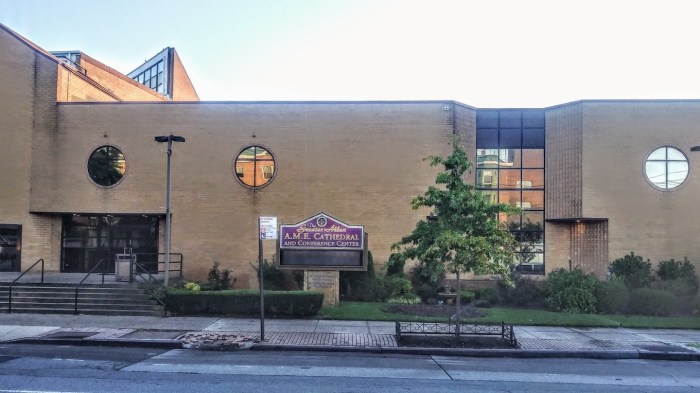
Come for the zeppole and stay for the traditions.
The fabled Feast of San Gennaro returns on Thursday and for 11 days, the clocks will wind back to a time when Little Italy was a major hub of Italian life in New York City.
There will be plenty of sausage and peppers, meatballs, cannoli and a new zeppole-eating contest (Sept. 18).
Looming large over it all is San Gennaro, the patron saint of Naples.

Statues of the Third Century Catholic martyr, also known as Januarius the Bishop of Benevento, can be seen throughout the feast, during processions down Mulberry Street, at the shrine in the Church of the Most Precious Blood on Baxter Street and a chapel on the feast route.
“It’s in our blood, it’s in our family,” Danny Fratta, operator of the feast’s popular Danny on the Corner zeppole stand, whose deep family roots in the feast span four generations. “It’s very important to us to keep this tradition alive.”
Fratta, 39, is a member of Figli di San Gennaro, a non-profit group that organizes the feast. The celebration dates back to 1926 when Neopolitan immigrants wanted to continue the September 19 feast day observed back home.
Every year, thousands of people flock to Naples hoping to see the miracle of the saint’s blood, kept in vials, liquefy.
It was also a chance for new Italian immigrants to celebrate their heritage. After being told they would be relegated to worship in the basement of other churches, dominated by Irish Catholics, the community built its own church.

Joseph Scelsa, president of the Italian American Museum, said the feast and Mulberry Street are iconic, representing Italians all over the world.
“This is absolutely a piece of New York, an important Italian piece of New York,” said Scelsa. “It was an opportunity not only to celebrate a religious activity but come together as a community.”
Over the years the feast grew to a large event that drew Italian-Americans from all around the city and beyond. But as the population shifted and gentrification swept through the Lower East Side, some complained the feast was in danger of morphing into just another New York City street fair.
There were also investigations linking organized crime to the feast. Mayor Rudy Giuliani famously threatened to shut down San Gennaro in the mid-1990s until an independent monitor was installed to oversee operations.
For the first time in years, a new wave of Italian immigrants is opening up eateries in Little Italy while a core group of younger people who grew up with the feast focuses on its rich history.

Fratta and childhood friend Ernest Magliato, operator of a sausage and pepper stand called Pips Pit at the feast, said they are honoring some of the old school traditions this year.
“For the first time in 25 years, we are bringing back the original San Gennaro arches, designed back in the 1940s,” Fratta said. “They are the biggest and brightest lights this feast has ever had. When these lights used to go up when I was a kid, I was the happiest kid in the world.”
Magliato, 39, said a small procession will take place when they move one of the San Gennaro statues from the church to the chapel.
“They used to do this on the first day of the feast and it hasn’t been done in a long time,” he said. “We are going to wheel the statue from the church around Hester Street and then put it in the chapel instead of just carrying it there.”
Over at Caffe Napoli on the corner of Mulberry and Hester streets, Louis Fontana said he is ready to serve up extra cannolis and family specialties such as spaghetti putanesca at the eatery opened by his grandmother over 40 years ago.

“It’s our culture,” he said of the feast. “We have a lot of pride in our heritage.”
Fontana said the business generated by the feast is vital for local merchants.
“Some people depend on it,” he said.
Maria Laurino, author of three books on Italian-American culture and identity, including the companion book to the PBS documentary series “The Italian Americans,” said the feast is very nostalgic for generations of people who attended with their families.
“In America, like so much of Italian-American life, it’s about memory, it’s about tradition, it’s about what it meant to our parents and grandparents to be Italian-American,” said Laurino, who also teaches at New York University. “There are few visceral reminders of that.”
IF YOU GO: The Feast of San Gennaro runs Sept. 12 through Sept. 22. The cannoli-eating contest is set for 2 p.m. Sept. 13; zeppole-eating contest is Sept. 18 at 1 p.m.; and the meatball-eating contest is Sept. 21 at 1 p.m.


































